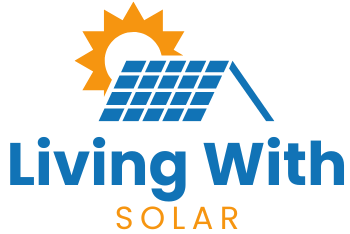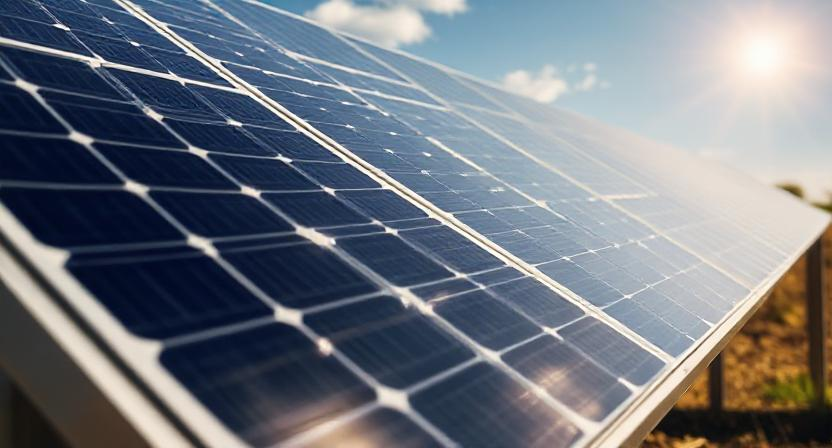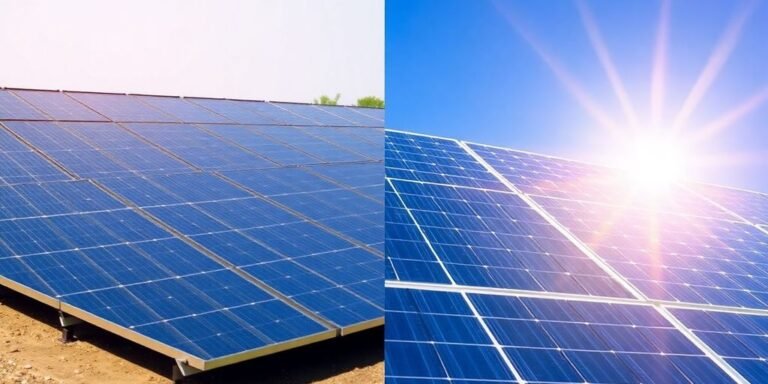When it comes to solar energy, the environmental impact is a crucial aspect that demands attention. While the idea of clean, renewable energy is appealing, the processes involved in harnessing solar power have implications that stretch beyond just reducing carbon emissions. From the extraction of raw materials to the disposal of decommissioned panels, each step in the lifecycle of solar energy systems has ripple effects on the environment. Understanding these complexities is key to making informed decisions about our energy future.
Key Takeaways
- Solar energy production affects land use, water resources, and ecosystems.
- Manufacturing processes involve toxic chemicals and emissions.
- Proper disposal methods are crucial to prevent pollution and electronic waste.
- Sustainable practices, recycled materials, and renewable energy use can mitigate environmental impact.
- Understanding the lifecycle analysis of solar panels helps address environmental concerns.
Solar Energy Production Processes
When it comes to the production processes of solar energy, efficiency is key.
Solar energy is harnessed through photovoltaic cells that convert sunlight into electricity. These cells are typically made from silicon, a material known for its effectiveness in capturing solar energy.
The production of solar panels involves the assembly of these cells into modules, which are then installed in arrays to generate power.
It’s crucial to optimize each step of this process to maximize energy output while minimizing waste. By streamlining manufacturing techniques and increasing the lifespan of solar panels, the efficiency of solar energy production can be greatly enhanced.
Embracing advancements in technology and sustainable practices is essential to ensuring the continued growth of solar energy as a clean and renewable power source.
Land Use and Habitat Disruption
To consider the environmental impact of solar energy, one must examine the consequences of land use and habitat disruption.
Solar farms require large areas of land for installation, leading to habitat loss and fragmentation. This can disrupt local ecosystems, displacing wildlife and altering natural habitats.
The clearing of land for solar projects can also result in soil erosion, loss of biodiversity, and disruption of water flow patterns.
It’s essential to carefully plan the location of solar installations to minimize these negative impacts.
Implementing measures such as utilizing degraded or non-prime agricultural land, incorporating native vegetation into solar sites, and conducting thorough environmental assessments can help mitigate the effects of land use and habitat disruption caused by solar energy development.
Water Usage and Pollution
Solar energy production involves the usage of water for various processes, including cleaning solar panels and cooling equipment.
While solar power generation is generally less water-intensive than other forms of energy production, water usage can still be a concern in water-scarce regions.
Additionally, the chemicals and materials used in the manufacturing of solar panels can pose risks of water pollution if not properly managed.
For instance, the production of photovoltaic cells involves the use of toxic chemicals like sulfuric acid and various heavy metals.
Proper disposal of these materials and monitoring of water quality are crucial to mitigate potential pollution risks associated with solar energy.
Being mindful of water usage and pollution in solar energy production is essential for minimizing its environmental impact.
Lifecycle Analysis of Solar Panels
A comprehensive lifecycle analysis of solar panels examines the environmental impacts associated with their entire lifespan, from raw material extraction to manufacturing, installation, operation, and eventual disposal.
The extraction of raw materials like silicon and metals can result in habitat destruction and water pollution. Manufacturing processes often involve energy-intensive activities that contribute to greenhouse gas emissions.
During operation, solar panels produce clean energy, reducing reliance on fossil fuels and mitigating air pollution.
However, at the end of their lifespan, improper disposal can lead to electronic waste issues, releasing toxic substances into the environment.
Understanding these lifecycle stages is crucial for developing sustainable practices and minimizing the environmental footprint of solar energy technologies.
Mitigation Strategies for Environmental Impact
Considering the environmental impacts highlighted in the lifecycle analysis of solar panels, implementing effective mitigation strategies is imperative.
To address the resource depletion and emissions associated with solar panel production, opting for manufacturers with robust sustainability practices can make a significant difference.
Utilizing recycled materials in panel production and improving energy efficiency in manufacturing processes are key steps.
Minimizing transport emissions by sourcing materials locally and investing in renewable energy for manufacturing facilities can further reduce impacts.
End-of-life management is crucial too; ensuring proper recycling and disposal of panels can prevent environmental harm.
Frequently Asked Questions
How Do Solar Panels Perform in Extreme Weather Conditions?
In extreme weather conditions, solar panels generally perform well, but may be affected. High winds can damage panels, hail can cause dents, and extreme heat can reduce efficiency. Regular maintenance can help mitigate potential issues.
Can Solar Energy Be Harnessed Efficiently in Urban Areas?
You can harness solar energy efficiently in urban areas by maximizing rooftop installations, using solar canopies in parking lots, and integrating photovoltaic systems into building facades. This approach optimizes space and increases renewable energy production.
What Happens to Old Solar Panels at the End of Their Lifespan?
When old solar panels reach the end of their lifespan, they can be recycled to recover valuable materials. This process reduces waste and allows for the reuse of components, contributing to a more sustainable approach to solar energy production.
Are There Any Health Risks Associated With Solar Energy Production?
Yes, there are potential health risks associated with solar energy production. Exposure to chemicals during manufacturing and installation, as well as electrical hazards, can pose risks. However, proper safety measures can mitigate these concerns.
How Does Solar Energy Impact Local Economies and Communities?
Solar energy positively impacts local economies and communities by creating jobs, boosting economic growth, and reducing energy costs. It also promotes energy independence, attracts investments, and fosters sustainable development, benefiting both individuals and communities alike.
Conclusion
In conclusion, understanding and addressing the environmental impact of solar energy is crucial for a sustainable future. By implementing mitigation strategies and sustainable practices throughout the production, installation, and end-of-life stages of solar panels, we can minimize ecological harm and maximize the benefits of clean energy. It’s up to all of us to prioritize environmental responsibility in the transition to renewable energy sources.





